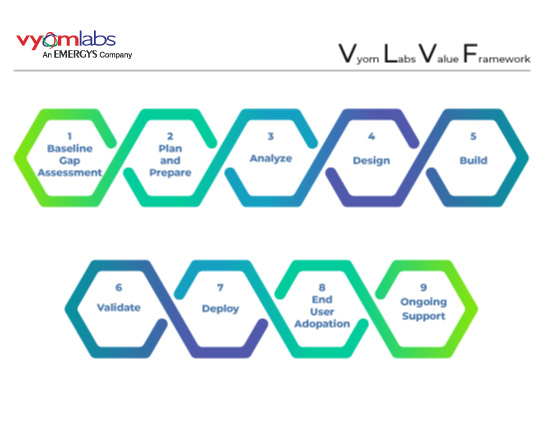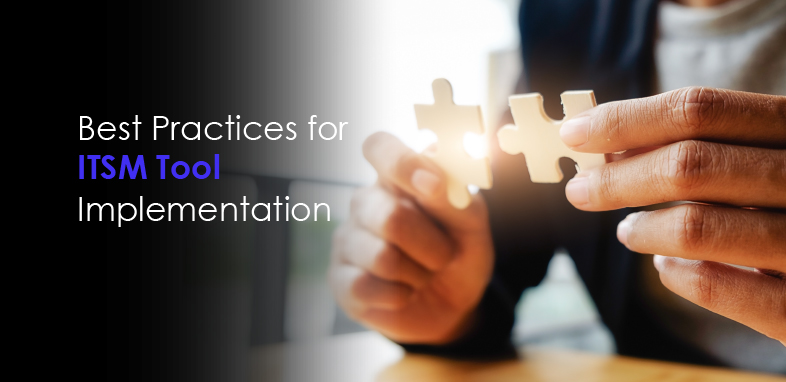A lot of planning is required for buying and implementing IT service management tools as it requires big investments in terms of time and money. Also, it’s a huge change for users to adapt to a new system.
However, in spite of this, most IT organizations end up replacing their ITSM tools once every five years. So what goes wrong? More often than not, this is because of the missteps during the implementation process.
Another important factor is the absence of metrics-tracking functionality that plays a crucial role in IT departments and helps them in demonstrating their value. As a result, when the chosen ITSM tool doesn’t deliver the intended results, companies tend to discard them off.
But this should not happen to you.
This blog will guide IT leaders, in maximizing investments and avoid unsatisfactory rollouts.
IT leaders need to consider following points ITSM Pre and post implementation:
- Prepare Your Customer for New Tool Adoption
If you are planning to move to new ITSM tool or getting it for the first time, understand what your customers are expecting. Customers may have different expectations or expect new tool with similar UI and feature to the previous tool which makes it easier to adapt. Understanding the requirements and setting up right expectations plays an important role in post implementation success.
- Invest in Training and Knowledge Transfer in the Service Desk
Service desk analysts need a full understanding of the services which he has to provide. He might know how to use the new tool but he should know the technique and approaches where he can perform the tasks more efficiently. Investments in self-service, ITIL training and knowledge management can increase the benefits. With self-service, tickets can auto-create and reduces contact volume and knowledge management can help your service desk analyst’s better handle the remaining volume with finding the solution in the existing database. There will be increase in customer experience and productivity as a customer can get the resolution quickly and meets SLA.
- Solve the Problem with Problem Management
The re-occurrence of the incidents is considered as problems. Problem Management will reduce incident recurrence and improve change success rates. You need not be an expert to get started with problem management. Initially the problem advisory board can identify workarounds till the time the solution is identified. Once the solution is identified, the solution is provided to the reoccurred incidents/problems. Problem management is a prevention mechanism for the incidents.
- Build SLAs based on a Business Critical Case
The tickets severity should be based on business priority. The ticket which is impacting the business should resolve on critical priority. An issue with a printer that only affects a single user might be having low priority, but if that single user is CFO and it’s the end of the quarter then this becomes the critical priority ticket.
- Get all of the Teams on the Same Page
Engage stakeholders early before going for new ITSM. Get all the teams on the same page which are working together. Everyone is responsible for the implementation and support of IT services to move to the next ITSM vision or new ITSM tool. Tier 2 and 3 resources might not be using the tool frequently, but they will need to interact with support processes and get the information and valuable insights. You should involve the leaders of those teams.
- Configure or Use Out-of-the-Box Processes
Preferably need to use all out of the box features of the ITSM tool for implementation. There should be proper planning for implementation and configuration of all requirements. If the out of box feature will not fulfill the requirement then only should have a suggestion for customization.
ITSM Tool Implementation Model
Following are the best implementation practices Vyom Labs follows which are completely based on the Proven Techniques for Successful ITSM Implementations.

Vyom Labs Value Framework [VLVF] details out our BMC implementation approach. This is based on successful ITSM Blueprint methodology. There are clearly defined input, output and activities for each phase. This ensures that the methodical progress happens from one phase to another. Every phase has documentation deliverables which ensure that the implementation system is well documented. This will ensure that later you will be benefited by the detailed documentation.
Uniqueness in our methodology is consultative approach for ITSM implementations and strong focus on reporting to get maximum value from ITSM investments for various stakeholders.
Baseline Gap Assessment
The main objective of this phase is to understand the current state and identify the gaps in process and propose the solution.
Plan and Preparation
The main objective of the preparation phase is to ensure project availability, facilitating a smooth transition from the sales cycle to the delivery commitment and understanding the client’s expectations. All the artifacts of the project must be assembled and the configuration of the internal systems in preparation for use by the resources assigned to the project in future phases.
The main objective of the Planning Phase is to bring the Vyom Labs and Client project teams on board by carrying out activities to gather information, develop a project schedule, and complete the project management plan. The project teams collaborate to carry out a formal meeting to initiate the project by presenting and confirming critical commitment criteria.
Analyze and Design
The main objective of the Design phase is to focus on the people, processes and requirements of the Customer’s technology and the design of the architectural solution (s). The project team carries out important activities, such as measuring the impact on the disruption in the Client’s organization, that the implemented solutions will have on the client’s business and documenting their business requirements in the form of a Solution Design Document.
Build
The main objective of the Construction phase is to ensure the relevant quality processes used in the design and execution of this commitment are in accordance with the deliverables established in the SOW and the quality standards of the BMC project, including the documentation of the construction of the solution using the Solution Design Document reviewed and accepted by the Client.
Validation
The main objective of the Validation Phase is to rigorously test to confirm that the solution constructed is in accordance with the Solution Design Document. This phase focuses on the testing of system components based on the test plan. Validation ensures that the needs and expectations of the client have been met or exceeded.
Deployment
The main objective of the Deployment Phase is to bring the solution fully configured and validated to the production environment, satisfying the technical and business requirements of the client. This phase is fundamental to the success of Vyom Labs and the Client, since it offers the opportunity for the client to realize the value that BMC solutions speak.
End User adoption and Ongoing support (Transition)
The main objective of the Transition phase is to orchestrate activities that ensure that when the Vyom Labs project team leaves the project, the client understands how to operate with minimal support; however, if support is required, the client understands how and when to contact Vyom Labs Support Services.
Implementation of ITSM tool is often part of a large and complex environment to improve operations. Making correct decisions and taking the right steps towards that is very important for successful implementation. The above points should definitely help to whom, those are planning to implement ITSM in there organization.
Vyom Labs has successfully completed 700+ BMC implementations for the medium and large enterprises. If you are looking for a trusted implementation or services partner, get in touch.
